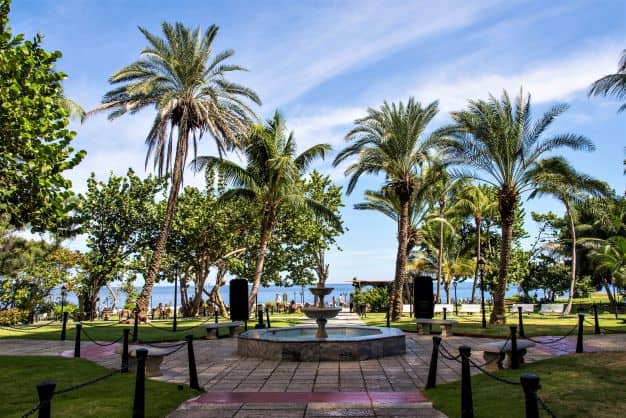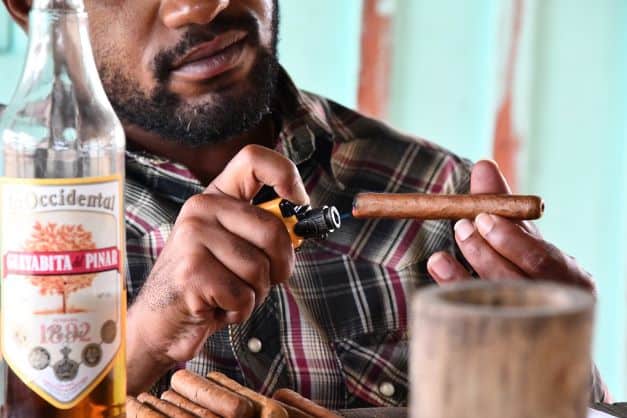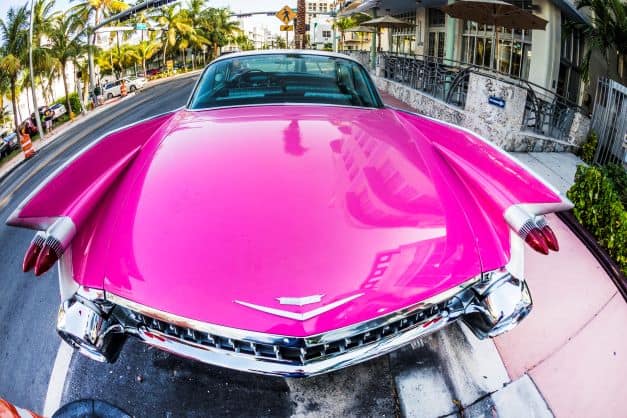Plan Epic Holidays In Havana: Tips From A Local (2024)
Wondering if planning your next holidays in Havana Cuba is a good idea? After traveling here regularly for five years, I will confidently claim that you will not regret visiting enigmatic Havana.
On my first visit here five years ago, I arrived as a solo female traveler, stayed for over a month, and had an incredible time. Havana is truly intriguing, and whether you love it or don’t get it, you will not leave indifferent.
Since I got here, I have explored every creek and turn in the city for the last five years. So, you are in very safe hands with my best tips for planning your time in Havana.

Holidays In Havana Bucket List
In a hurry? My Rec’s of Top 3 Tours Havana!
📍 Old Classic American Car Tour! This is the absolute best way (although “touristy”) to get a feel for the whole of Havana while traveling in style!
📍 Vinales Valley Private Day Tour in a classic American car! You will visit a tobacco plantation, go horseback riding, and explore the stunning Cueva del Indio, Mural de la Prehistoria, and more!
📍 Private Classic Car beach day trip! Even though Havana City is amazing, you will probably appreciate a lounging beach day (rated 10 out of 10), at Playa del Este or even Varadero!
43 Amazing Things To Do In Havana Cuba!
If the city buzz is what gets you going, you can choose Old Havana as your Cuba base, explore the city, and visit other destinations in central western Cuba on day trips.
My top recommendation is the Classic Car tour. It is a slightly touristy thing to do, I know, but also a super smart and stylish way to get an overview of greater Havana.
1. Classic American Car City Tour
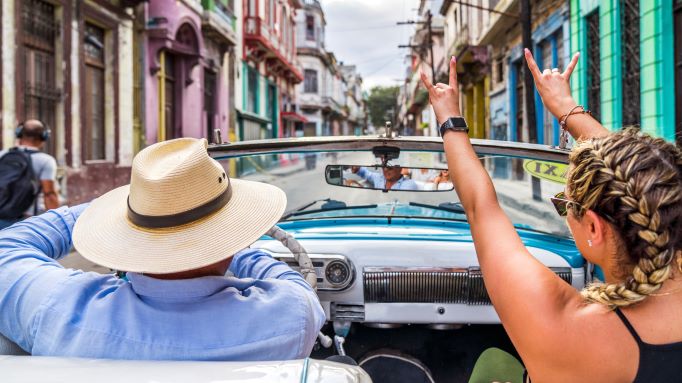
One of the first things you will notice in Havana is the elegant, bright-colored classic American cars roaming the streets, as they have been since the first half of the last century!
I always recommend this tour to my visitors.
This is not just a really cool way to travel (some of these are regular taxis), but also a great way to get an overview of the whole city while traveling in style.
A beautiful car will pick you up at your hotel and take you around the city to see the Malecon, Vedado, John Lennon Park, the Havana Forest, stop for a Mojito, then Plaza de la Revolucion, Colon Cemetary, and even more!
2. Top-Rated Havana Street Food Tour
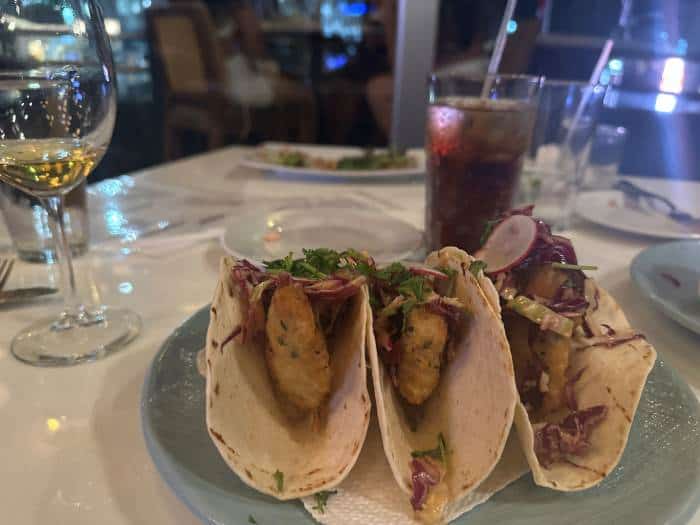
Is food one of your passions to explore while traveling?
Then you probably will enjoy this Havana street food tour, making stops to try typical local fried foods like churros (sweet!), chiviricos, and traditional Cuban pork!
You will also test traditional foods with a Cuban twist like popcorn, hot dogs, and peanuts, and to go along with it a guarapo (sugarcane drink), and strawberry syrup-flavored crushed ice!
For the afternoon tour, you will also stop by the famous Coppelia Ice Cream parlor (that some love and some don’t) to test the cooling merchandise.
3. See The Tropicana Cabaret Dance Show

If you like to enjoy grandiose stage shows, the classic Tropicana Cabaret with dozens of dancers, sparkling costumes, and a mix of Caribbean and Cuban dance styles might be perfect for you!
I loved this show, but then again, I am way above average interested in Latin dances.
The show was inaugurated in 1939, is nicknamed “Paradise under the Stars,” and will take you for a two-and-a-half-hour journey into the rhumba, salsa, mambo, danzon, and more.
Included in the ticket is enough rum to last you the night while immersing in the classic ambiance of Frank Sinatra, Marilyn Monroe, and Edith Piaf, the elegant heroes of the 1920ies.
4. Things To Do Havana – Playas Del Este
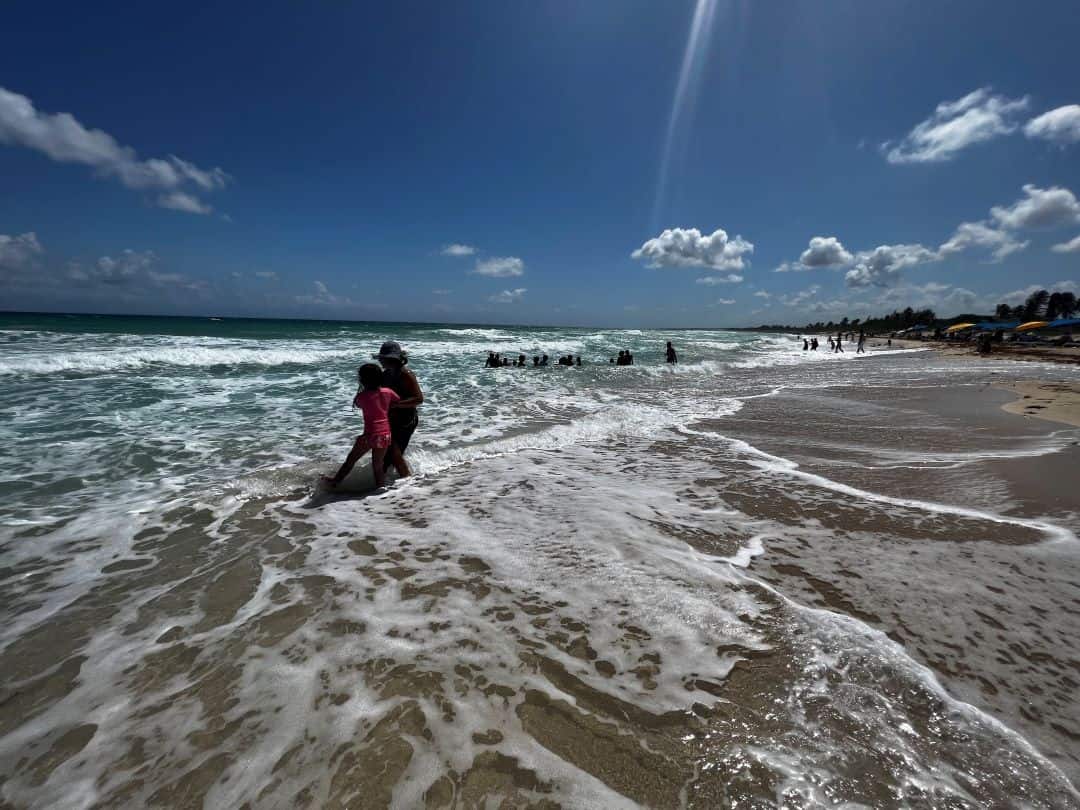
One of the things to do in Havana is actually to take a breather on the beach. To the east of Havana, in Habana del Este, there are several beautiful beaches only 15-20 minutes from the center of the city.
These are known as Playa del Este.
I love coming here for a day out of Havana. Either by booking a private taxi to drop me off or by putting my trust in the local bus that stops at the most popular beaches along the shores of East Havana.
This area does not attract as many foreign tourists as other areas like Varadero or the Cuban Keys. You will have the chance to hang with more of the locals here and make an effort to get to know the Cuban culture and people.
5. Private Trip To Stunning Las Terrazas

When you need a bit of a break from the buzzing city, one of the places to visit in Cuba outside Havana is the breathtaking area called Las Terrazas.
Around an hour outside Havana, you find this almost-hidden oasis designated a Biosphere Reserve by UNESCO in the hills of Pinar del Rio Province.
I went here with a friend right after a hurricane, and even though the area turned out to be closed for repairs at that time, they allowed us in to enjoy the crystal clear water all by ourselves!
You will explore a 19th-century coffee plantation farm, as well as the extensive gardens and traditional Cuban architecture at Hotel Moka.
Also, stroll the streets of Las Terrazas before you go to the Soroa orchid garden, Castillo de las Nubes, and, finally, the stunning Soroa waterfall, where you can cool down at the end of the day!
6. Explore Hemingway`s House In Cuba Finca Vigia

Ernest Hemingway is one of the most famous habaneros extranjeros who lived in Havana on and off for 30 years. Hemingway first visited Cuba in 1928 when he was actually on his way to Spain.
He stayed for a few days, and that was the first time he was a guest at the Ambos Mundos hotel in Obispo Street, Old Havana, where you can still see his room.
Hemingway returned to Cuba in 1932 and 1939 before he and his wife bought the estate Finca Vigia, the lookout ranch, which is now a museum.
Finca Vigia was Hemingway’s home on and off until 1960 and is also where he wrote seven of his books, including The Old Man and the Sea.
📍 EpicNomadLife Tip: Get yourself a water bottle with a filter before your Cuba holiday, and you can drink water from anywhere.
It is HOT, and bottled water can sometimes be hard to find in Cuba.
7. Rent A Bike And Cycle Around Havana
If you want to explore Havana a little faster than on foot, you can rent a bike for Havana online with BikesBooking before you arrive.
Just remember that the traffic in Havana is a bit unpredictable, so pay attention and be vigilant when you are cycling the most trafficked streets!
8. Walking Tour Havana Old City
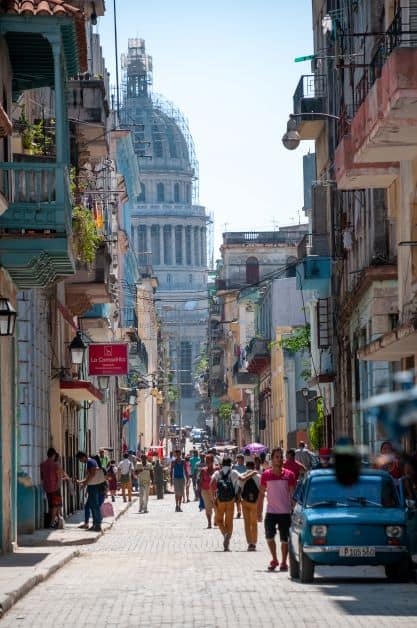
There are said to be more than 900 buildings of historical importance with architectural styles in Old Havana, ranging from Baroque to Art Deco, all on show.
You could spend a week or more just exploring Old Havana if you would like to. If you want some help doing that, you can also book a guided tour to have someone tell you the stories as well.
I did this tour during my first weeks in Havana, and it gave me so much more insight into the city’s history and the intriguing people that have shaped this city.
You will learn that in the colonial days, a thick wall protected this part of town, and there were lots of attacks from what is described as «pirates, buccaneers, and filibusters.»
Today, there are only a few sections of it remaining. One of them is now the home of the National Revolutionary Police Force HQ of Havana.
9. Santeria and Regla Culture & Religion

Regla is an area in Havana with a lot of important cultural and religious significance.
You might not have heard about Yoruba, also called Santeria in Cuba, the Afro-Cuban religion that the vast majority of Cubans belong to and live by.
This is a mix of the African religion that arrived with the slave trade centuries ago and the Catholic faith that arrived with the Spanish.
On this top-rated Regla tour, you will take the ferry to see the Iglesia de Nuestra Señora de Regla.
This church is dedicated to the Virgin of Regla, who is represented by a black Madonna and is venerated in both the Catholic church and in Santeria.
You will see the Santeria women reading palms and carrying out good-luck rituals (important in Santeria) and other Santeria rituals on the boardwalk near the church, where animal sacrifices are sometimes performed!
10. Havana Photo Tour
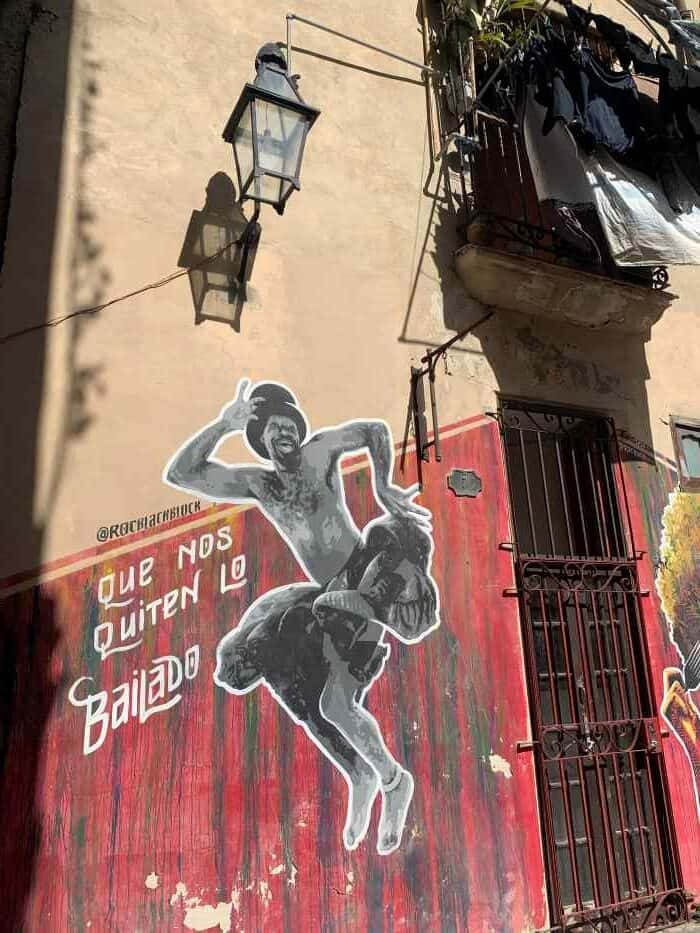
Unless you do like me, move here, and have all the time in the world, this top-rated Havana photo tour will take you to the most symbolic spots of Old Havana.
You will have tons of amazing photo ops, and you will learn more about the capital of Cuba on your way around.
Then, you will climb into one of the classic American cars, head for the Malecon, and then a panoramic viewpoint to capture the essence of Havana from afar.
All summed up with a cool Cuban cocktail at the end while enjoying the scenic view!
11. Walk The Malecon At Sunset

El Malecon is a very social place for habaneros. People come here every night to chill, but especially on Saturdays.
This is a place for dating, fiesta, and socializing, where people bring rum and old sub-woofers, listen to music, dance, watch the sunset, and spend the evening.
I “use” the Malecon for running (one of the very few people in Havana doing this), leisurely walking in the afternoon, and watching the sunset from the Malecon wall every now and then. Zen!
12. Havana Obispo Street Old City
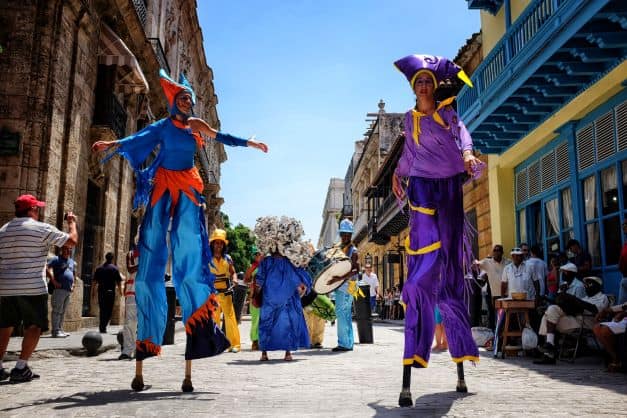
Calle Obispo, or Obispo Street, is the main street of Old Havana.
It runs all the way from the sea up to the little Parque Fransisco de Albear y Lara, right next to the famous Floridita restaurant and bar where Hemingway used to hang!
Along Calle Obispo, there is always a lot of life: little shops with souvenirs, clothes stores, ice cream stands, snack bars, museums, and restaurants. This is also the most touristy street in Old Havana.
In the lower part, the ambiance is calmer; you can stop and rest at the historic Plaza de Armas (below) on a bench in the shade.
13. Plaza De Armas Havana

The Plaza de Armas Havana (which is literally Weapons Square, but it is better translated as Parade Square or Parade Ground) is a general name used in Latin America for main squares.
This is the oldest square in Old Havana, from when colonial Havana was founded in the 16th century.
It got its name in the late 16th century when the governor, who then lived in the Castillo de la Real Fuerza, used the area to conduct military exercises!
In the center of the square is Parque Céspedes, pinned by a white marble statue of Carlos Manuel de Céspedes, who was the initiator of the Cuban Wars of Independence, so he is called Father of the Homeland.
The former governor’s palace, the 18th-century baroque Palacio de Los Capitanes Generales, lies on the street laid with wooden tiles instead of cobbles. Apparently, it was built to lower the noise from the street, which appears to have annoyed the Governor!
Today, the house is the home of Museo de la Ciudad, the City Museum, dedicated to the city’s history.
14. Walk By Castillo De La Real Fuerza
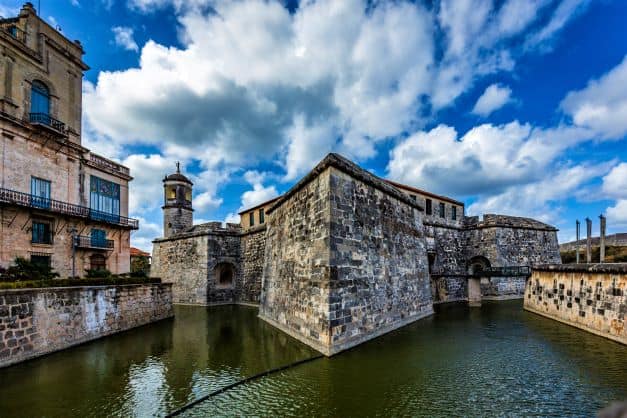
Castillo de la Real Fuerza, or Castle of the Royal Force, is a fort situated on the western side of the Havana inner harbor, close to Plaza de Armas.
It was meant to defend Havana against pirates, but it actually turned out it was situated too far from the entrance to the harbor to do that.
The fort was instead turned into the residence of a long line of Governors. In 1634, Juan Vitrián de Viamonte added a watchtower here, with a weathervane sculpted like a woman.
The belief is that it is in memory of Isabel de Bobadilla, Havana’s only female governor through the times.
She was supposed to look after the city while her husband, Hernando de Soto, went on an expedition to Florida. When he disappeared at sea, his wife, while waiting (as she did not know he had died), ended up holding the position for years!
The figure eventually became the symbol of the city of Havana, and even features on the Havana Club rum label!
Castillo de la Real Fuerza is considered to be the oldest stone fort in the Americas and was listed in 1982 as part of the UNESCO World Heritage site “Old Havana and its Fortifications.”
15. Have A Cocktail At Floridita – Hemingways Hang-Out In Old Havana
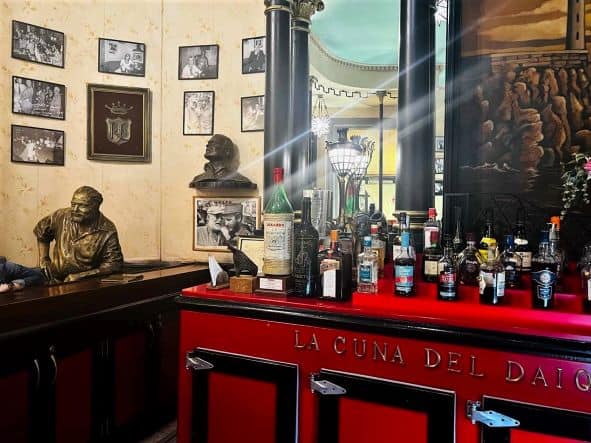
At the end of Calle Obispo, just across the road from the Manzana Kempinski, lies the Floridita restaurant and bar on the corner.
The Floridita is a historic Havana cocktail bar and seafood place (I love the shrimps in garlic here), which was also one of its favorite watering holes for Hemingway.
This was also a popular hangout for many generations of Cuban and foreign intellectuals and artists and is famous for its frozen daiquiris.
You can still have a cocktail at the Floridita while sitting next to the full-size bronze statue of Hemingway, which is seated at the bar!
16. Taste The Cuban Rum Or The Sweet Licor (And Cigars)
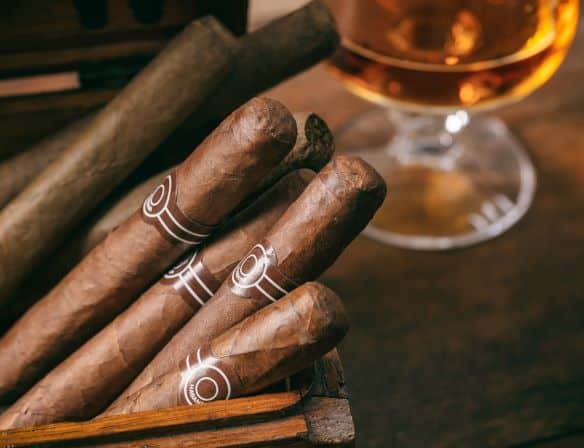
Cubans love their rum and sweet liquor. Get your hands on a bottle of Cuban rum and sweet liquor of fruit or coconut, and enjoy one of each on your balcony later with a drizzle of ice.
There are lots of small licorerias like this scattered around the city, not just here, so just keep your eyes open!
If you want some guidance, you can book a Havana Rum & Cigar Tour to make sure you learn a little bit and get the best introduction to this side of the Cuban culture.
17. Take Dance Classes In Havana Cuba
You know the old saying, when in Rome, do as the Romans! Why not take one or several salsa classes in Havana, Cuba, when you first are in the capital of dance and rhythms?
Learning to dance was one of the first things I did when I arrived in Havana for the first time, even in the first week.
You can join a dance class of around one hour with English-speaking teachers at the Salsa Estilo Cuba Dance School located in El Vedado.
Try a variety of Cuban dance styles, including salsa, merengue, bachata, kizomba, and cha-cha-cha. You might also have time for the Cuban rumba, the mambo, and tango!

18. Guided Walking Tours Havana
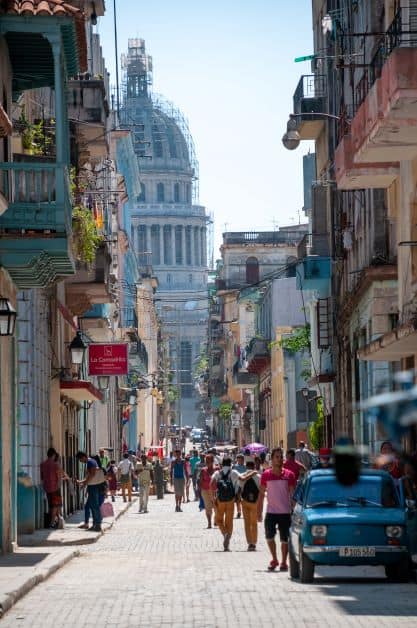
There are several organizers of walking tours around Old Havana, both free ones with a «drop-in» from a specific point in Havana to tours where you register for a small fee.
The tours normally last for 2-3 hours and cover the most famous historical sites and buildings while a guide tells you the intriguing history and stories of Havana.
Make sure to bring good walking shoes and plenty of water in the Caribbean heat!
19. Explore El Capitolio
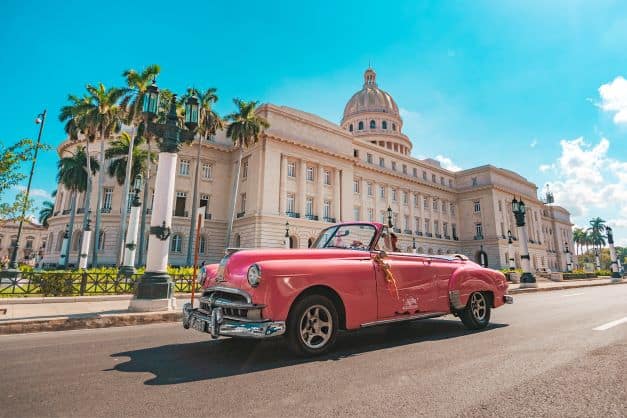
Take a tour inside the Capitolio, the grand building remarkably resembling the White House in the US. I took my parents on this tour, and they loved it!
The Capitolio was built in the 1920s and is situated along the Prado next to the Parque de Fraternidad between Old Havana and Central Havana.
Apparently, it is not intended to be a replica of the White House. According to the architect Eugenio Raineri Piedra, the inspiration for the cupola came from the Panthéon in Paris!
Before the Cuban Revolution of 1959, the Cuban Congress lived in this building. Following the Revolution, the Cuban Congress was abolished, and the building slowly fell into disrepair.
Fifty-six steps lead up to the main entrance, with 12 granite columns in two rows welcoming you. Inside the main hall is the 15-meter-high gold-covered bronze statue of the Republic (La Estatua de la República).
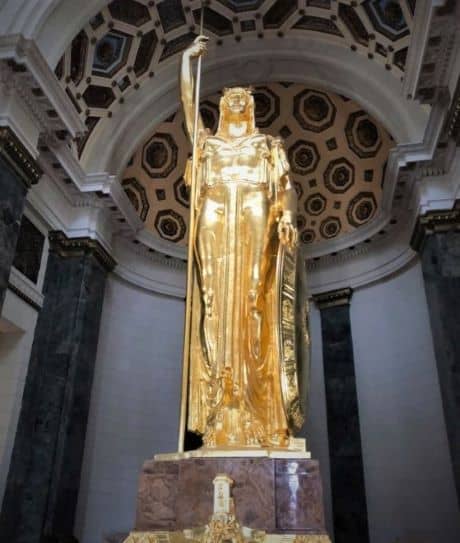
Embedded in the floor in the center of the main hall is a replica 25-carat diamond, which intends to mark Kilometre Zero for Cuba.
The original diamond is said to have belonged to Tsar Nicholas II of Russia and was sold to the Cuban state by a Turkish merchant at one point.
20. Stroll The Boulevard San Rafael
Boulevard San Rafael in Central Havana is a shopping street (most of the distance) that starts at Parque Central and goes all the way to the Vedado district through Central Havana.
The pedestrian part of the boulevard has lots of shops, restaurants, and bars and has a more «high-end» feel than Calle Obispo in Old Havana.
The second part of San Rafael runs through an area is very similar to Old Havana in its formation, but this area has a less grandiose feel.
You may feel a little lost in the conglomerate of broken streets with cars, bicycle taxis, and people.
If ever that happens, from San Rafael, you can always turn to the north, and you will walk straight onto the Malecon and the sea.
21. Visit The National Museum Of Fine Arts
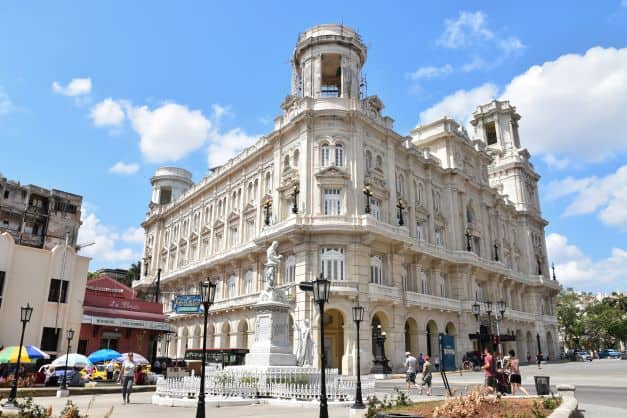
Museo Nacional de Bellas Artes de Cuba, or the National Museum of Fine Arts Havana, is a museum that shows Cuban art collections ranging from the start of the Colonial era until the 21st century.
There are two collections. One is focused on Cuban Arts in the Palacio de Bellas Artes, and the other is displaying Universal Arts in the Palacio del Centro Asturiano.
This exhibition in the Palace of Fine Arts is dedicated exclusively to housing Cuban Art collections.
Displayed items span from the 17th and 19th centuries and have sections for religious subjects, landscape, and the Costumbrismo narrative.
22. The Grand Theater
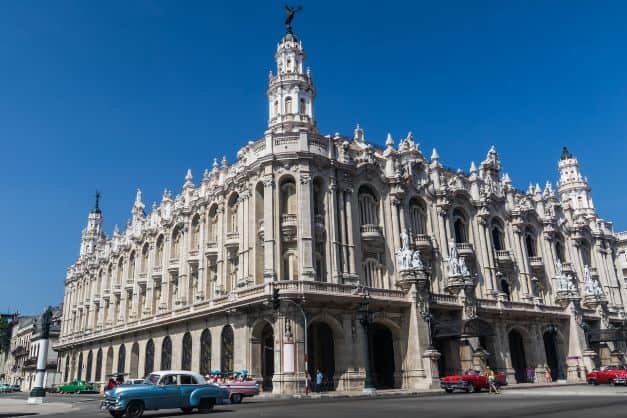
The Grand Theater of Havana is situated beside the Capitolio, very close to Parque Central, and is home to the National Ballet in Cuba.
It is a grand structure in the daytime but even more stunning at night when it is lit up by tens or maybe hundreds of floodlights.
Book a tour to see the theater, or you can get a ticket and experience a performance.
As this is Cuba, you can not pre-book tickets online, but you will have to go to the theater box office and purchase your tickets there while in Havana. They are also on Facebook.
23. Visit Museo De La Revolucion Cuba
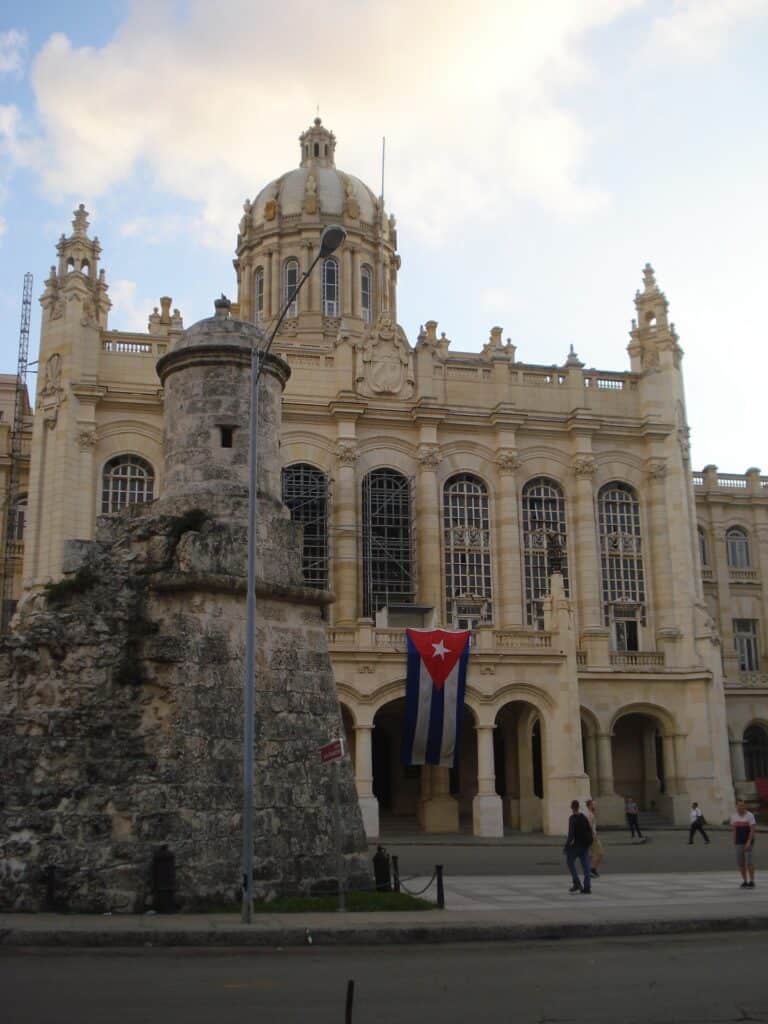
The Museum of the Cuban Revolution is in what used to be the Presidential Palace of all Cuban presidents from Mario García Menocal up to Fulgencio Batista.
It became the Museum of the Revolution shortly after the revolution on the 1st of January 1959, when Batista fled the country, and Fidel Castro took over after ten years of armed opposition and guerilla war.
Inside the museum’s Cuban history section, you will find mainly exhibits from the Revolutionary War of the 1950s and the history after the revolution.
Parts of the museum are also displaying the history of pre-revolutionary Cuba, including the 1895-1898 War of Independence waged against Spain.
24. Stop By Hemingways Favorite Hotel Ambos Mundos
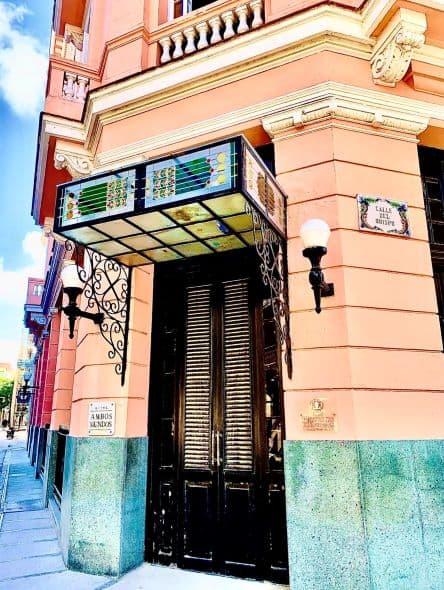
Visit Hotel Ambos Mundos Havana, Hotel Both Worlds, which was Hemingway’s home away from home for ten years before he bought his beloved Finca Vigia on the outskirts of Havana.
Ambos Mundos is still a hotel, and at the back of the foyer, there is an interesting ornate old elevator guarded by a, well, guard to get you up to the rooftop.
Hemingway’s regular room is marked, the hotel foyer is beautiful, and there is a rooftop with a nice view of Havana. The airy terrace on top has a bar and restaurant where you can enjoy a break in your city and walk in the historic aura.
25. Visit Plaza De La Catedral

Plaza de la Catedral is one of the five main squares in Old Havana and the site of the Cathedral of Havana, which is where it got its most recent name.
It was the last of the main squares in Havana, built on one of Old Havana’s most beautiful spots, an area that used to be a swamp!
Originally, it was named Plaza de la Ciénaga (Swamp Square) because of its muddy terrain. By the 18th century, it had already become one of the city’s most important squares.
It finally became Plaza de la Catedral after the old Iglesia de la Compañía de Jesús was consecrated as a cathedral.
26. Have A Mojito At Plaza Vieja Old Havana

Take a slow walk around the Plaza Vieja in Old Havana and give yourself time to notice all the artsy details of architecture on the buildings. Lots of sculptures are scattered around the plaza; just spend some time and enjoy the ambiance of the space.
The Plaza Vieja first emerged as an open space in 1559. It was built as a popular alternative to Plaza de Armas and was a place for processions, executions, fiestas, and bullfights.
In Plaza Vieja, you can sit down with a mojito or lunch in one of the cafes or restaurants in the plaza.
27. Visit El Cristo De La Habana
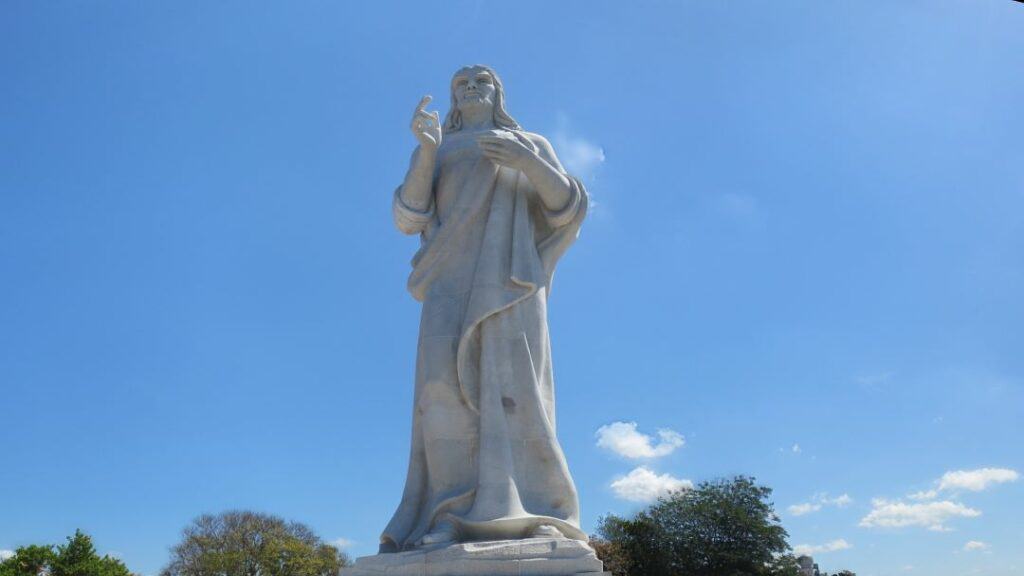
Just beside the La Cabaña fortress, when you watch from the Old Havana side of the bay, you have a clear view of one of Havana’s most prominent sculptures, the statue of Christ, El Cristo de la Habana.
About 20 meters tall, the white Jesus of Nazareth was built from 67 blocks of marble that were brought from Italy after being personally blessed by Pope Pius XII. The statue was inaugurated on La Cabaña Hill on December 24, 1958.
It is easy to stop by and view the statue while you are visiting La Cabana fortress, just a few hundred meters away.
28. Visit The Havana Fortresses
There are several fortress structures in and around Havana, from remnants of fortifications that do not exist anymore to the grand fortresses that have guarded the city for centuries.
El Morro “The Rock”
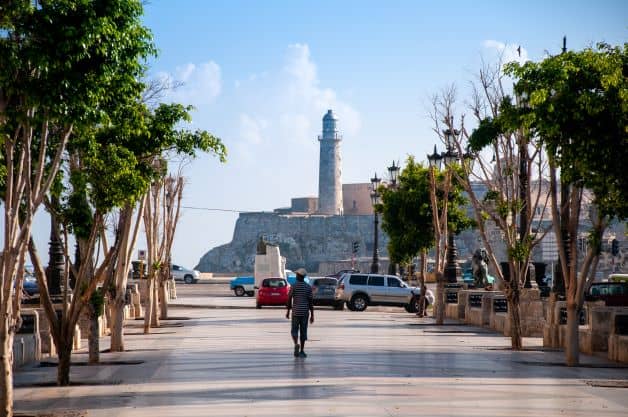
The El Morro is situated on the tip of the entrance to Havana Bay, across from the end of the Paseo del Prado, overlooking the sea outside Old Havana.
This castle was built in the 16th century to protect Havana from frequent vicious attacks from the sea.
El Morro, the rock, is a landmark with its looming tower where the lookout could control any ships approaching the shores of the city.
The fortress is part of the Old Havana World Heritage Site, inscribed in 1982 for its historical importance in the European conquest of the New World and its unique mix of architecture.
Today, it is a museum and tourist attraction where you can walk around the centuries-old buildings and let yourself be drawn back to times past.
Fortaleza De San Carlos De La Cabaña
La Cabaña fortress is situated across the bay of Havana from the Old City and is part of the fortification structure with El Morro.
It was built in the late 18th Century as the capture of Havana by British forces in 1762 proved that El Morro was no longer sufficient to protect the city from its enemies.
When it was completed in 1774, La Cabaña was the second-largest colonial military installation in the New World.
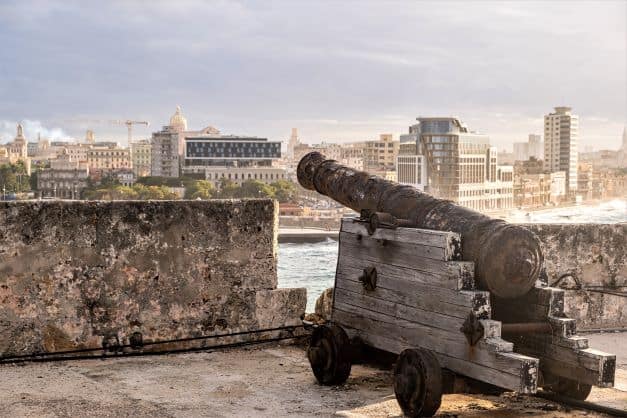
After the Cuban revolution in 1959, La Cabaña was appointed a prison for traitors, where, among others, the infamous Che Guevara served as the head of the prison for a period.
It is estimated that several hundred Batista supporters were executed in Cuba after the revolution during the tribunals.
Today, it is a quiet place; the peace is only interrupted by visiting tourists. I love coming here right before the night ceremony, when the cannons fire at 9 pm, which can be heard all over the city.
29. Chillax With A Hotel Day Pass
Buy a hotel day pass and spend one day on a rooftop with a pool if your place does not have that! The Caribbean heat can be excruciating for anyone, not just delicate tourists.
For example, the Manzana Kempinski Hotel is right next to Parque Central, the Iberostar Parque Central is next door, and any of the hotels has a stunning blue infinity pool on the roof.
The historic Hotel Nacional in Vedado does not offer a rooftop but a beautiful garden where you can enjoy the sun and the pools in the middle of the city.
30. Things To Do Havana: The Vedado
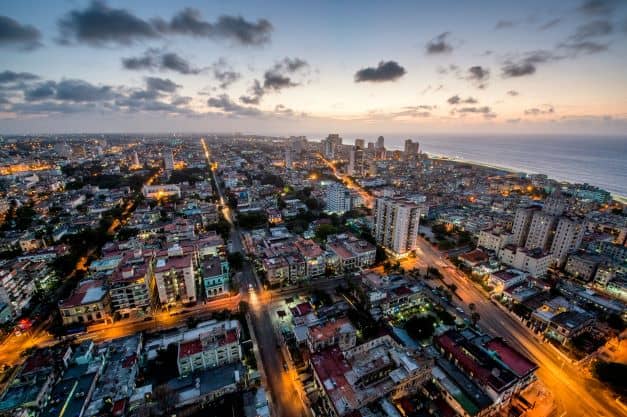
Vedado is described as a business district, an urban neighborhood, and an entertainment district in Havana. Although that is true, it is also a cultural area and a somewhat calmer part of the city than Old Havana.
It is mostly a residential neighborhood with wider streets, lower houses, and lush parks, all better kept than Old and Central Havana.
There are a lot of embassies in this area, as well as shops and malls, restaurants, bars, nightclubs, and cultural establishments.
31. Experience Hotel Nacional De Cuba

Have lunch or dinner at the Hotel Nacional (you can also stay there, of course), the huge and majestic stone building lying on the edge of a cliff above the Malecon, just a stone’s throw from the Caribbean shore.
From the hotel, there is a magnificent view of the busy life below and the sea, while within, there is a calm, elegant atmosphere.
32. Cultural Hub Callejon De Hamel

Callejon de Hamel Cuba is an alley in Vedado that has become a symbol and a center of Afro-Cuban culture and religion santeria.
It is a display of the African origins of millions of Cubans and is considered a public temple to the Santeria religion and Afro-Cuban culture.
There are sculptures built into the structures, such as colorfully painted path tubs bricked into the walls or made out to be benched for anyone with tired feet.
Everywhere are artsy details in different materials, shapes, and colors.
On Sundays, the alley buzzes with music, dance, and people celebrating the Afro-Cuban culture, a spectacle you will never regret seeing!
33. Art & Club Venue Fabrica De Arte Cubano

La Fabrica de Arte is an art gallery and club in Havana, built inside a former cooking oil factory constructed in 1910.
In 2008, a group of Cuban artists and musicians began to look for a centralized location in which art could be shown, leading to the group’s acquisition of the closed factory in 2010.
The current Fabrica de Arte opened in February 2014 and has since gained a fiery reputation as one of Havana’s premier nightclubs and art galas. It is attracting young Cubans and foreign nationals, and the prices are more suited to foreigners than Cuban salaries.
La Fabrica de Arte normally has a full program of activities every week from Thursday through Sunday nights. The general advice is to get there before 10 pm as it is always crowded and you won´t miss the experience.
34. Coppelia Ice Cream Parlor In Vedado

The Coppelia ice cream parlor in Vedado is super famous, so much so that it is a tourist site in itself, and there are often queues outside.
Coppelia has also been very popular among the habaneros since its opening way back in 1966. Although it is an iconic place, the tourists on TripAdvisor are not always very impressed when giving the Coppelia a review, to be fair.
If you choose to hacer la cola (stand in line), which might take some time, well, maybe you love this ice cream; maybe you don’t!
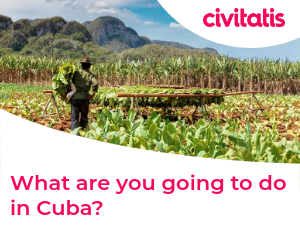
35. Visit Cine Yara Cinema
El Cine Yara, Yara Movie Theater, is considered a true cultural icon. It is situated on the busy corner between Avenida 23 and Calle L in Vedado, right across the street from the Coppelia ice cream place.
The building is designed by architects Emilio del Junco, Miguel Gastón, and Martín Domínguez.
It comprises the front section of the Radiocentro architectural complex that was opened in 1947 and is still considered to be one of the cornerstones of Cuban modernist architecture.
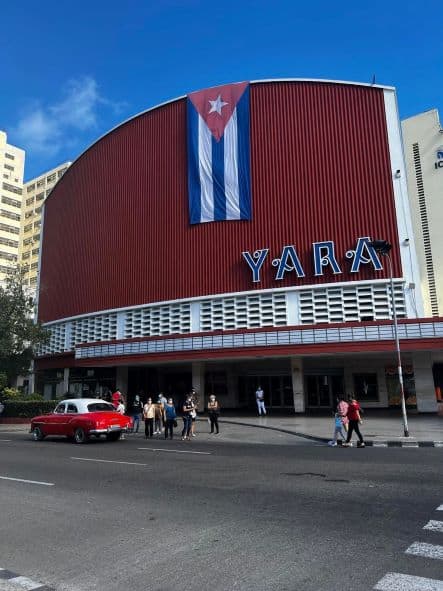
At that time, the cinema had the most advanced technology of that era in terms of lighting, acoustics, and air conditioning. Initially, the theatre also had a variety of shows in its 1650-seat hall.
This includes performances by Cuban and Latin American stars such as Libertad Lamarque of Argentina and Pedro Vargas of Mexico.
It is one of the important venues for the International Festival of the new Latin American Cinema.
I went there for a stand-up show a while back when truth be told, my Spanish was not really up for it. But the crowd laughed, the atmosphere was super, and it was nevertheless a great experience!
36. The Historic Colon Cemetary Havana

Necrópolis Cristóbal Colón, Colon Cemetary, is a historic and famous cemetery in Vedado founded in 1876, named after Cristopher Columbus.
After the fourth cholera epidemic in the 1860es, the city realized there would be a need for a larger space for their deceased, and they began planning for the Colón.
El Colón is a Catholic cemetery and has elaborate monuments, tombs, and statues by 19th and 20th-century artists. There are more than 500 major mausoleums here, and plots were assigned according to social class.
The areas of the cemetery are divided by rank and social status, with distinct areas for priests, soldiers, brotherhoods, the wealthy, the poor, infants, victims of epidemics, pagans, and last but not least, the condemned.
All the cemetery’s main streets are built in the four cardinal directions, symbolized by a Greek cross, which also represents the spread of the gospel in all directions, as well as the four platonic elements.
37. Visit The Napoleon Museum
Napoleon Museum in Havana houses an important historical collection from the 18th and 19th centuries preserved in the Western hemisphere.
Founded in 1961, the museum was designed by the same architects who built El Capitolio in Old Havana.
There are almost 8,000 items displayed in the museum, mostly from the period from the French Revolution until the Second Empire of Napoleon III.
Here, you can view Napoleon’s death mask, brought by Dr. Francesco Antommarchi, who was the last doctor to treat Napoleon on Saint Helena, as well as Napoleon’s telescope!
The exhibition includes a specialized library, weapons, suits, coins, military equipment, furniture, and historic and decorative objects.
38. Plaza De La Revolucion

Plaza de la Revolución in Vedado is famous for the many political rallies that took place there under Fidel Castro.
Fidel and other prominent people of power had mass rallies here, and more than a million Cubans gathered on the plaza on important occasions.
Pope John Paul II and Pope Francis held large masses there during their visit to Cuba in 1998 and 2015 respectively.
Many important ministries and buildings are located around the plaza, including the Palace of the Revolution, the home of the Communist Party and the Cuban government.
The main tourist attraction on the plaza is the José Martí Memorial, which features a 109-meter tall tower where you can visit the top and an 18-meter-tall statue.
The old Classic American cars that offer a one-hour trip (€30) around Havana stop here on the large plaza; I have taken everyone visiting me to experience this place!
39. Museum Of Decorative Arts Havana
The Museum of Decorative Arts Havana opened in 1964 in the house of José Gómez Mena. Gómez’s sister was María Luisa Gómez Mena, who was a wealthy patron of Cuban artists and a vital figure in Havana at the time.
At the residence, she used to host fabulous parties and gatherings for celebrities from Cuba and other parts of the world, from aristocrats to movie stars, to intellectuals, to politicians.
In today’s museum, you can see exquisite furniture from different eras, as well as numerous pieces of art and sculptures. Inside the museum are more than 33,000 pieces of historical and artistic value.
You can view oriental pieces from the 16th to the 20th centuries, as well as pieces from the reigns of Louis XV, Louis XVI, and Napoleon III. It is a magnificent display of the decadent wealth and luxury of the aristocracy through the centuries.

40. University Of Havana

The University of Havana is also located in Vedado. It is the oldest university in Cuba, founded in 1728, and it was actually started as a religious institution.
Inside the main gate, there are seven frescos that represent Medicine, Science, Art, Thought, Liberal Arts, Literature, and Law, and a bronze statue of Alma Mater, which means “Nourishing Mother” in Latin.
The University developed for centuries until after the coup by Batista in 1952, when free and democratic elections were suspended.
University grounds became a center of gatherings for politically active students, and the student organization FEU was in fierce opposition to Batista. Violent clashes between university students and Cuban police at one point reached their extremes.
Batista closed down the university after the FEU attempted to assassinate him in 1957 with support from Fidel Castro.
The university remained closed until Batista fled the country and Fidel Castro entered Havana in January 1959.
Today, the University has 19 faculties, according to its home page, various research institutions, and currently around 60,000 students from both Cuba and the rest of the world.
41. Things To Do Havana Fusterlandia Art Center
A twenty-minute drive to the west of Old Havana, you find the special art center Fusterlandia, a universe of mosaic-covered streets and houses in the Jamainatas neighborhood created by the late artist José Fuster.
Fuster began his art project with mosaic tiles back in 1975 when this area was a scruffy, poor fishing community.
After the Cuban revolution, times were tough in Cuba, and creating art was not a priority in the everyday lives of Cubans.
Fuster studied at Havana’s Art Instructor’s School and traveled across Europe to continue his education, where he found inspiration in great artists like Pablo Picasso and Antoni Gaudi.
He has even been nicknamed the “Picasso of the Caribbean”.
When Fuster was featured in National Geographics in 2013, after four decades of work, he said that his experiences inspired him to create a magnificent piece of art.
This is why, today, you can admire Fuster’s life legacy in West Havana. It is all created by mosaics and pieces of everyday objects implemented in the neighborhood where he made his life canvas.
If you opt for a Cassic Car tour of Havana, negotiate with the driver to extend the tour and visit this remarkable place.
42. Snorkeling in Havana
If you love the sea, the underwater world, and snorkeling, AND you are quite fit, this snorkeling tour in Havana might be for you.
This tour will take you around half an hour outside Havana to the Playas del Este, where you will start your snorkeling adventure. The thing is, you have to swim a bit!
There are two shipwrecks in this area, the City of Alexandria (300 meters) and the SS Olivette (750 meters), that you can explore if you have swimming stamina.
The City of Alexandria sank in 1893, and the SS Olivette in 1918. Both of these shipwrecks are very important in Cuban history, and you will learn all about the history.
Just so you know, the whole time, you’ll be accompanied by two guides who’ll have buoyancy aids to take care of safety and security underway.
43. Have Cuban Dinner At Cafe Cristo
Cubans love their chicken and rice, and although you can get that at almost any restaurant in Havana, the “tourist version” is not exactly like the Cuban version.
If you want a Cuban dinner, head over to Parque Cristo in Old Havana and enter Cafe Cristo on the corner.
If you are lucky, there is some available seating among one of the 3-4 tables inside, or else you can also order takeaway. Bring a plastic bag or box; often, they do not always have that in the restaurant (well, paladar, to be exact).
You will get a chicken leg with arroz morro and some salad on the side, made the Cuban way, for 3-4 dollars. Eat in while enjoying the music, or take away and eat in the park!
Soo Many Amazing Things To Do Havana!
When you are planning a trip to Cuba, exploring the capital, Havana, is a must-do. There are so many things to do in Havana; the main question is how to prioritize your time.
But be aware that there are very few activities you can book online before going to Cuba unless you use a Cuba-certified tour operator to organize them for you before your arrival.
😎 Find all the information you need to research & plan your Cuba journey!
📍 Can Americans Travel To Cuba? How To Travel From US in 2024!
📍 42 Legendary Things To Do Havana Cuba! Ultimate Guide 2024!
📍 9 Best Tours In Varadero Cuba!
📍 19+ Unique Things To Do In Trinidad Cuba!
📍 14+ Amazing Things To Do In Vinales Cuba 2024
📍 FAQs Cuba Travel
FAQ’s Havana Cuba!
Many people have various questions about traveling to Cuba in general, and Havana in particular, as it is still a country somehow shrouded in myth and secrecy.
Here are the answers to some of the most common and frequently asked questions about traveling to Cuba and Havana!
Is Havana Cuba Worth Visiting?
Yes! Yes, yes, yes, Havana, Cuba is definitely worth visiting! Even if you don’t really like cities, Havana is a city worth visiting.
This capital city is simply unique, one of a kind, with its particular architecture, history, and details all around the city. Even if you don’t stay for super long, please come visit!
This guide to things to do in Havana will show you the most famous places, tours, and activities to help you plan your vaycay time. From Havana, you can also book a variety of day trips out of the city.
Unique Things To Do In Havana!
Well, if you want advice on things that you can only do in Havana and no other places within Cuba (or in other countries), these are my top recommendations:
- Experience Callejon de Hamel on Sundays! There will be an array of people playing music and dancing and doing religious Santeria rituals and sacrifices (nothing dangerous) – it’s gonna be loud, and there will be quite a lot of rum!
- Have a cerveza on the Malecon wall at sunset, from where you see the Morro fortress, the Vedado skyline, and almost across to Fort Lauderdale across the strait.
- Take a bici-taxi into the conglomerate of Central Havana at night and have a gourmet dinner at San Cristobal (where Obama ate). Call and book a table beforehand, and ask for a chambre separee! You will not be disappointed.
- Although you can take a classic old American car tour in other places too – I still think roaming the Havana streets is the most charming and authentic place to do it, so that makes the list.
Why are US citizens not allowed to travel to Cuba?
This is NOT correct. US citizens ARE ALLOWED to travel to Cuba.
Americans can choose a reason for Cuba travel among 12 pre-approved reasons for traveling to Cuba, determined by the US government.
Can US citizens travel to Cuba as a tourist?
Technically, US citizens are NOT allowed to travel to Cuba as a tourist.
Americans choose between 12 pre-approved reasons for Cuba travel, among which the most common one is “to support the Cuban people”.
American citizens still need to buy a tourist card, also called a tourist visa, to enter Cuba.
What are the 12 requirements to travel to Cuba?
You can read about the 12 pre-approved reasons to travel to Cuba for US citizens here.
The easiest and most common reason for Cuba travel is “to support the Cuban people”. There is no paperwork or application process connected to this, you just choose your reason and state that reason if anyone asks.
What happens if a US citizen travels to Cuba?
Nothing happens if a US citizen travels to Cuba apart from hopefully, the US citizen will have a fabulous holiday and encounter Cuban culture.
US citizens need to choose one of the pre-approved reasons to travel to Cuba and need to buy the PINK Cuban tourist card, also called a tourist visa.
Selected airlines sell this visa/tourist card, or you can buy one online.
What documents do I need to travel to Cuba?
You need the following documents to travel to Cuba:
- Passport valid for 6 months after the date of entry
- Cuban tourist card / tourist visa
- Proof of travel insurance, including health insurance
- Fill out the d’viajero.cu digital document before your journey
Do Americans need to be vaccinated to enter Cuba?
No, there is no requirement for specific vaccines prior to entering Cuba.
Your country’s health department probably has recommendations for what vaccines you should consider before entering Cuba.
How Do I get a tourist card for Cuba?
You can buy a tourist card online from Easy Tourist Card, or from the Cuban embassy in your country.
You might also be able to buy a Cuban tourist card from your airline or at the airport prior to departure. A tourist card can be bought at Miami International Airport’s check-in counter for American Airlines and Delta Airlines.
How Do I Get A Tourist Visa For Cuba?
A tourist visa is the same as a tourist card for Cuba. You can buy it from the following places:
- Buy one online from Easy Tourist Card
- Buy one from your airline if they offer this
- Buy one at the airport of departure if they offer this
- Buy one from the Cuban Embassy in your country
Is Travel To Cuba Allowed Right Now?
Yes, Cuba travel is allowed right now.
In addition, American citizens must choose one of the 12 pre-approved reasons for traveling to Cuba (Americans can not travel as “tourists”) and follow some simple guidelines for traveling in Cuba.
Why Can’t Americans Go To Cuba?
This is not correct, Americans can go to Cuba!
American travelers just need to abide by a set of regulations set by the US Government. As long as that is done correctly, US citizens can easily travel to Cuba.
Here is a short list of what Americans traveling to Cuba must do to travel within the regulations:
- Buy the pink tourist card for Cuba
- Choose one of the 11 preapproved reasons for travel to Cuba
- Stay at a hotel or casa particular that is not owned by the Cuban state
- Do not shop in stores that are owned by the Cuban state
Is It Safe To Travel To Havana Cuba?
Yes, it is safe to travel to Havana Cuba.
Cuba is, in fact, one of the safest destinations in the region for tourists. This has a lot to do with the fact that anyone convicted of crimes against tourists in Cuba will face severe penalties.
Consequently, you can walk very safely on the streets of Havana and the rest of the island as well. Be morally vigilant, like you would anywhere else (close bags, don’t flash your valuables), and you will be fine!
What Is The Best Time To Travel To Havana Cuba?
The high season to travel to Cuba generally is around Christmas (it can be a bit cold) and in the summer months.
However, the wet season runs from around May through October, and in this period, there are a lot of afternoon rain showers. Within this period is the hurricane season, mainly in August and September.
The summer months are also incredibly hot and humid. My best advice weather-wise for traveling to Cuba and Havana is in the period March through May (early June).
Also, from September through November, if you don’t mind, afternoon showers and the occasional tropical storm.
Is It Expensive To Travel To Havana Cuba?
You can get flights to Havana and Varadero for a reasonable price if you can travel a little bit outside the high season.
Outside the high season, the hotel and accommodation prices are also lower, as well as restaurant prices.
Check prices from your airport of origin here:
What Are The Cuba Travel Insurance Requirments?
You need valid travel insurance, including medical insurance, to travel to Cuba.
Since 2010, any foreign traveler to Cuba must have documentation of medical insurance, although there is no requirement on the level of coverage sum you need.
American citizens need to have an Emergency Medical policy as well as Medical Evacuation & Repatriation coverage in order to enter Cuba.
How To Travel From Varadero To Havana?
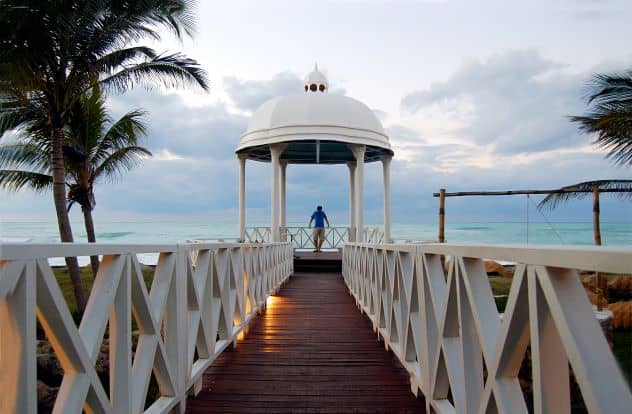
You can easily travel from Varadero to Havana in one of the following ways:
- Book a ticket online with the Viazul bus
- Get a taxi privado (expensive) or taxi collectivo (shared taxi, a lot cheaper) through your hotel or casa particular
- Book an organized day tour from Varadero to Havana (if you just want to go for the day)
What Is Havana Best Known For?
I really want to say that Havana is best known for just being Havana!
Being the capital of the Cuban revolution, the face of Cuba for 60 years, the home of a mix of three continents, and five centuries worth of history of colonialism, wars, trade, and diplomacy.
But maybe Havana is simply best known for the Old Classic American Cars still roaming the streets for most people, as that is what is colorfully visible in the grand Parque Central.
Is Three Days In Havana Enough?
Well, that simply depends. Are you a city sleek that loves to explore new cities on foot (or by bici taxi) for days – or does a noisy metropolis full of people, dogs, cats, and cars stress you?
If you love cities, nightlife, dancing, and the hustle and bustle, three days in Havana might be a bit short. But as you can see here, there are lots of things to do if you want to.
On the other hand, if your idea of a perfect holiday is tropical beaches, winds in palm trees, and soft waves, three days in noisy Havana is probably just what you can take.
Wrap-Up 42 Legendary Holidays In Havana
Are you feeling the travel buzz yet?
There are so many cool things you can do while visiting the Cuban capital. While I was based in Old Havana, I had the city buzz practically “in my house” (no such thing as sound isolation here).
Hope you found something to look forward to for your Cuba trip.
Related blog posts:
Easy Havana Tour Guide: 8 Best Havana Tours By A Local

